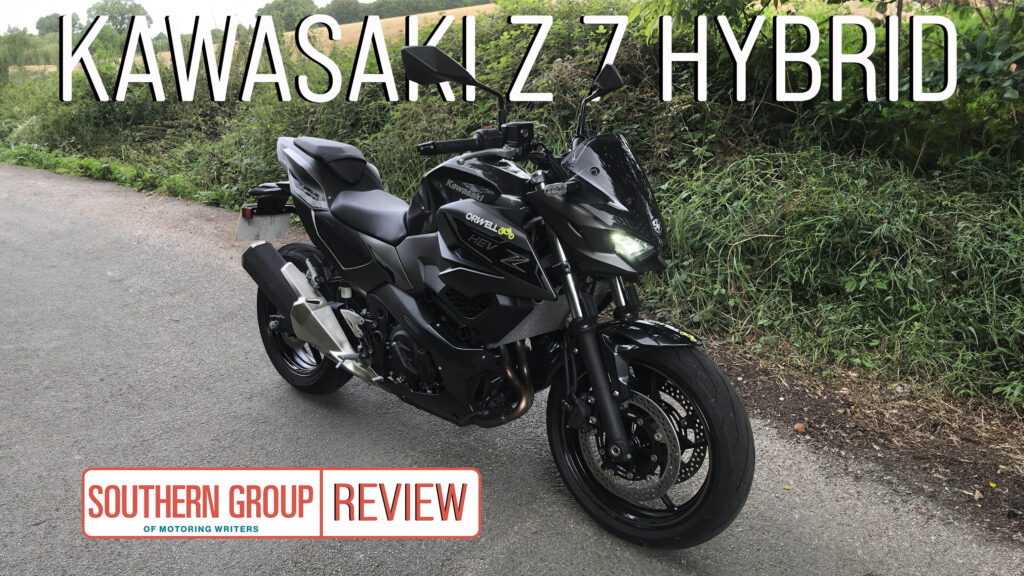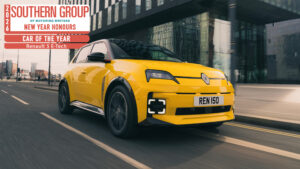A quarter of a century ago I drove the original Toyota Prius hybrid saloon, the world’s first mass-produced petrol-electric hybrid car. The rest is, as they say, history, writes motoring writer Andy Russell.
The Prius propelled four-wheel motoring into a new era of eco-efficiency even though, at the time, the hybrid hoo-ha was mind-boggling.
Now Kawasaki has unleashed this clever eco technology on the motorbike world. The only thing that surprises me is why it has taken so long.
2024 Southern Group Heritage Day: full report
I am not an electric vehicle evangelist but, whatever your view, hybrid power has had a big impact on modern motoring.
So I was eager to also try out the world’s first mass-produced hybrid motorbike.
Kawasaki has launched two versions – the naked Z 7 Hybrid, which I rode, and the faired Ninja 7 Hybrid.
A new petrol 451cc parallel twin, water-cooled four-stroke engine is mated with a 9kW (12PS) traction motor and self-charging battery.
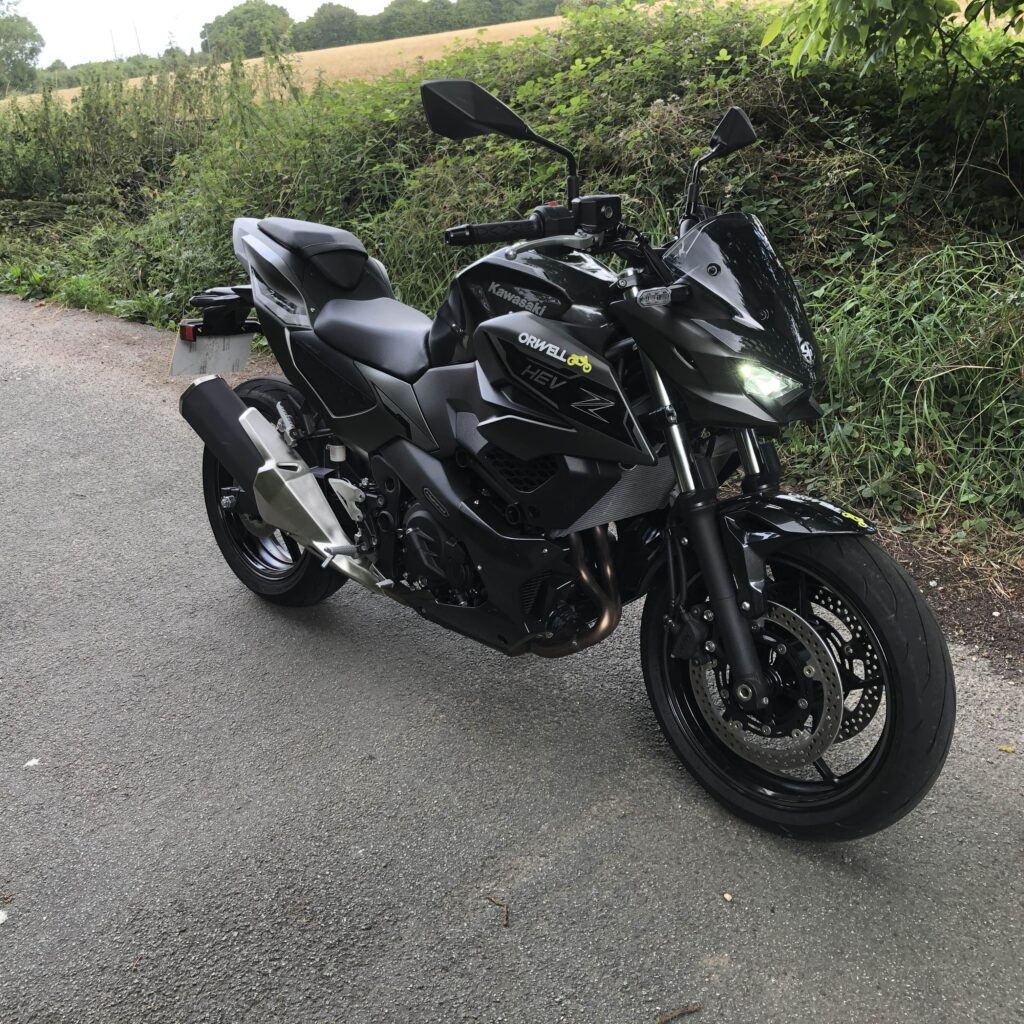
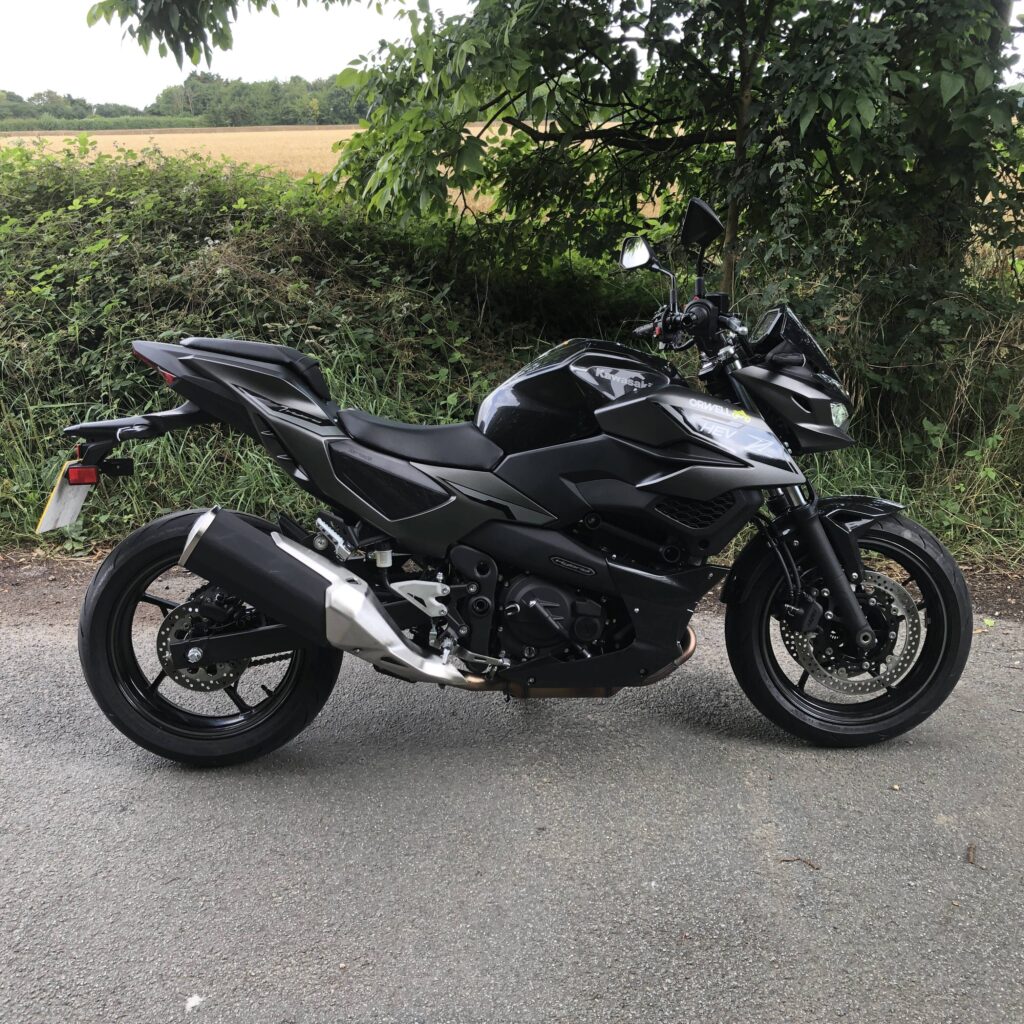
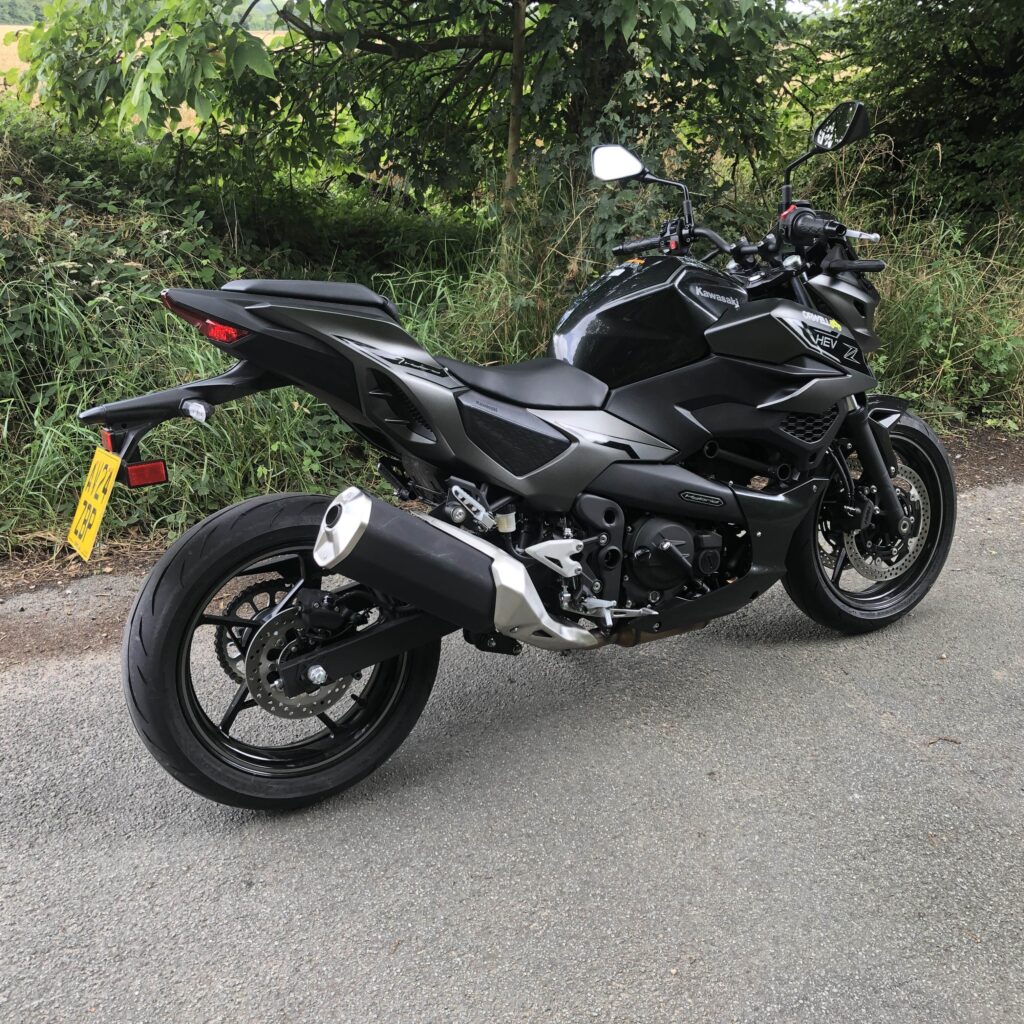
Six-speed transmission has automated and manual modes, the latter controlled via switches on the left handlebar cluster so there is no clutch lever (I wish I had a pound for each time I went to pull it in coming to a stop).
The battery recharges via a generator using kinetic energy produced when braking and slowing down so no cables or plugging in.
This is a three-in-one motorbike.
In pure electric EV mode you have a fully-charged range of about seven miles at a limited speed – I saw a maximum 43mph – and the gearbox works only in auto.
It is easy to switch to Eco model, via another switch on the left-hand cluster, when the motorbike’s clever brain works on the best power source – engine or battery. Auto stop-start cuts the engine when stationary to save fuel. Open the throttle and away it goes to about 10mph before the engine cuts in.
Another button, again on the rather busy left-hand cluster, allows you to opt between auto and manual gearshifts.
When shifting manually you can also activate Automatic Launch Position Finder (ALPF) to automatically select first gear when you stop.
The real fun comes in Sport mode when the engine and electric motor work together to give maximum power and performance.
The engine produces a useful 59PS but, in Sport, pressing the E-boost button on the right handlebar cluster sees power rise to 69PS for five seconds as the electric motor gives added grunt.
The Z 7 surges forward for quick overtaking manoeuvres but E-boost can also be used from standstill for quick getaways. As soon as E-boost is replenished from the battery you can do it all over again. It is quite addictive but take care firing it out of corners when the bike is lent over.
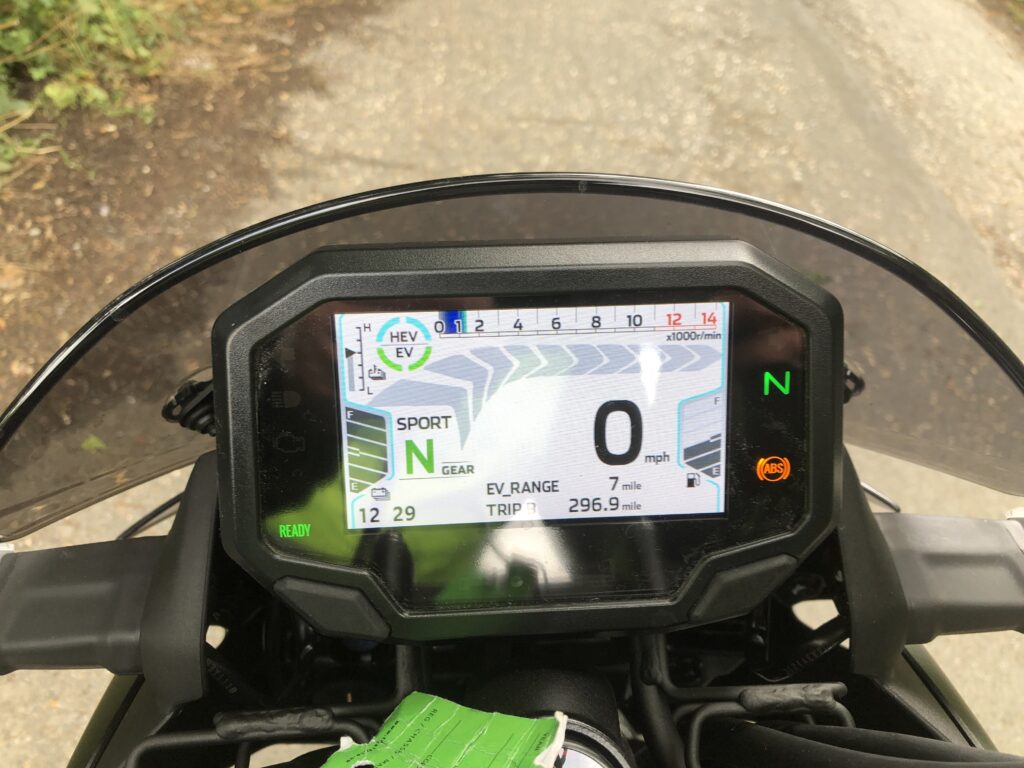
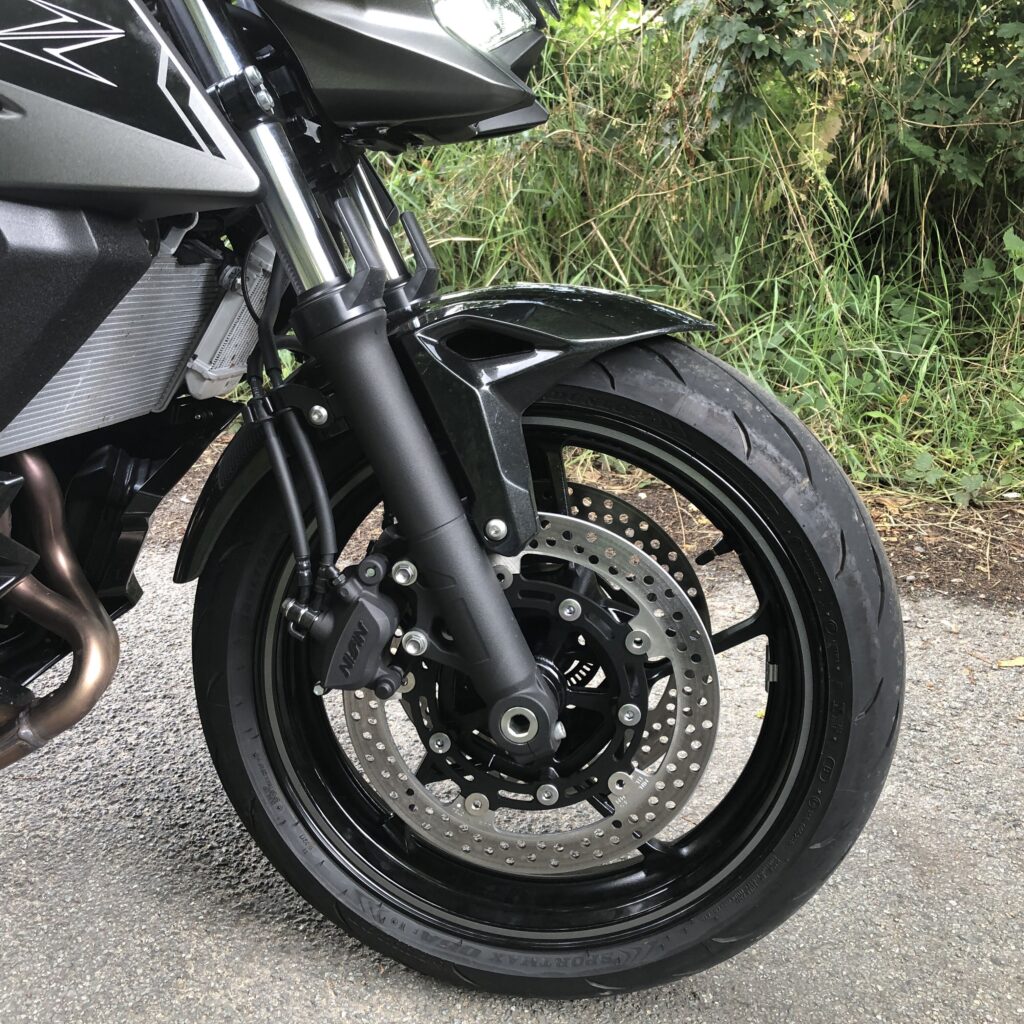
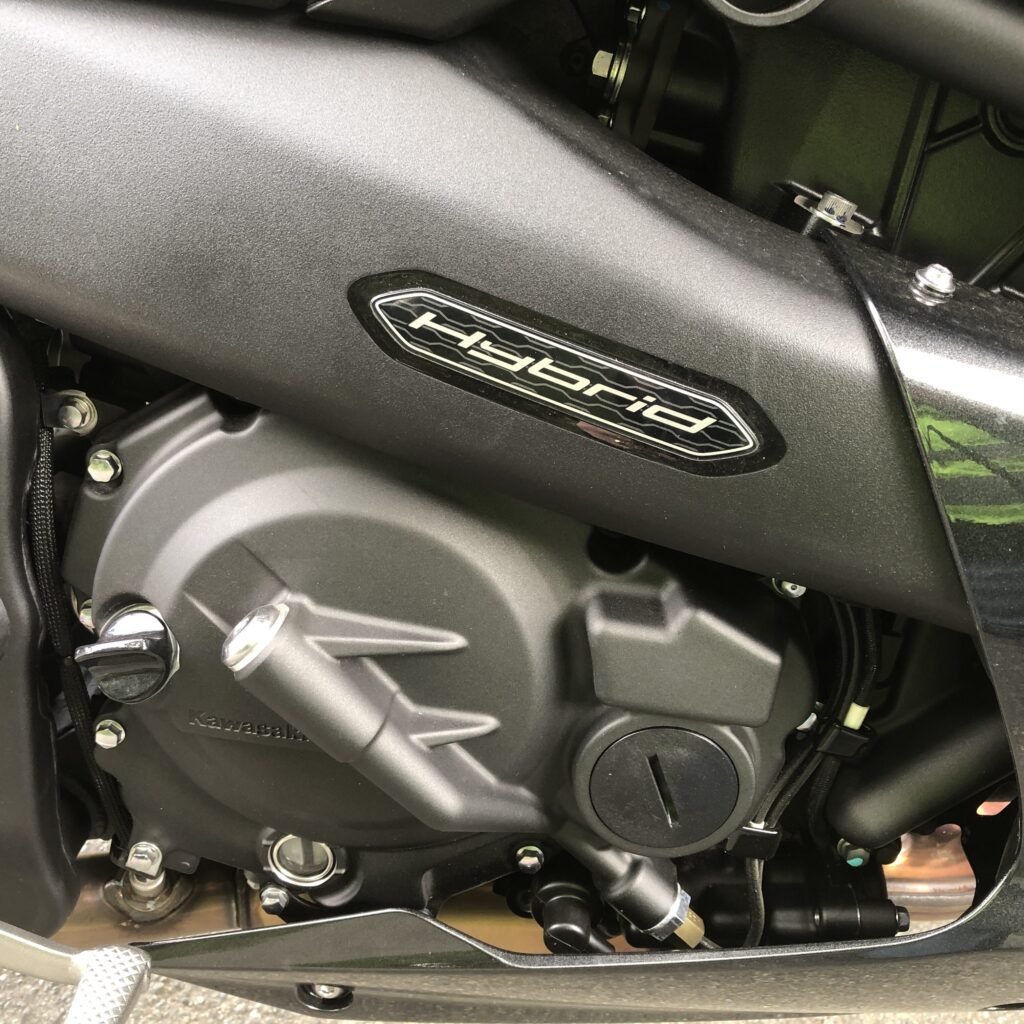
Even in Eco it pulls willingly with combined torque of 60.4Nm at just 2,800rpm.
The Hybrid is no lightweight at 227kg but does not feel unwieldy.
If you need help manoeuvring it at a low speed there is a walk mode which works via the twist grip, both forwards and in reverse. Guess where the button is to engage it. Yep, left-hand cluster.
A full colour TFT dash, with smartphone connectivity, displays ride and transmission modes so you know what is going on.
The Hybrid sounds complicated compared to a traditional ICE motorbike but I soon got to grips with the tech and found I was enjoying the experience.
I rode out of town silently in EV mode, switched to Eco as I left the urban speed limits but stuck with automated shifts. When the road opened up, and I wanted more power, I just clicked into Sport mode and shifted gears manually.
Despite its extra weight, long wheelbase and basic suspension – the front forks have no adjustment , the rear shock a simple preload – handling is up to the job but this is no sports bike. The rear end can feel bumpy on poor roads.
What takes more getting used to is that automated gearbox. Low-speed automated shifts in Eco can feel a little clunky and it shifts up through the gears very quickly to boost fuel economy.
The result is that not a lot happens when you open the throttle in sixth gear and engine braking is minimal. I often switched to manual shifts which also felt sweeter at higher revs.
Kawasaki claims the Hybrid offers 650 to 700cc class performance, off-the-mark instant acceleration to rival a 1,000cc supersport model and 250cc-like economy.
That might be the case if you wring its neck but, despite a host of test riders getting to grips with the hybrid powertrain, the demo bike had averaged 68mpg. I expect that would improve with experience.
This hi-tech Hybrid is an interesting proposition and a worthy winner of the Motorcycle News Innovation of the Year award in the influential motorbike publication’s 2024 honours.
Despite the £11,949 tag for either model, I can see it appealing to early-adopters who love technology and want to go green, if only to offset the carbon footprint of a bigger motorbike.
The 7 Hybrid would be in its element commuting, making the most of the different power options but, at the moment, it is a niche market.
Mind you, going back to that early Toyota Prius many fellow motoring hacks were not convinced hybrids were the future.
This launch is a brave move by Kawasaki, albeit late compared to the car market, but you have to applaud the initiative.
